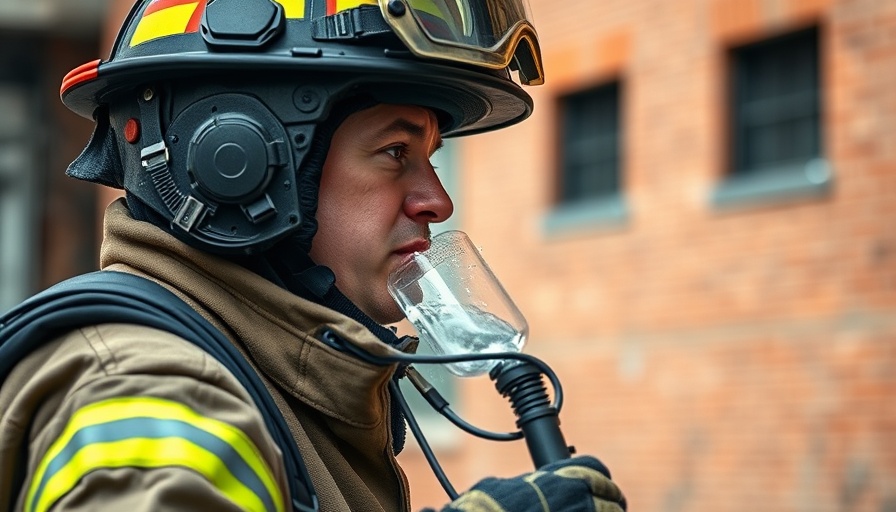
Transforming Firefighter Safety: The Fight Against Dehydration
As temperatures soar in South Texas, the Corpus Christi Fire Department (CCFD) is stepping up its game to protect firefighters from dehydration, one of the most significant hazards faced on the job. By exploring innovative technology, the CCFD aims to revolutionize safety protocols, ensuring firefighters have access to real-time data that could prevent heat-related illnesses.
The Innovative H-Drop Wearable Sensor
The device under consideration is the H-Drop, a wearable sensor specifically engineered to monitor hydration levels. When affixed to a firefighter’s body, it provides instantaneous feedback on moisture levels, allowing them to make timely, informed choices regarding their fluid intake. Assistant Fire Chief Tony Perez emphasizes the significance of this tool, stating that it has the potential to be a game-changer in their fight against dehydration.
Why Hydration Matters
Proper hydration is crucial for maintaining performance and safety, particularly in the strenuous conditions fire personnel often face. According to the National Fire Protection Association, dehydration can lead to serious health issues such as heat exhaustion or heat stroke. With the H-Drop, firefighters can actively monitor their hydration status, which motivates them to make healthier choices throughout their shifts and during training.
Technology Meets Tradition: A Modern Approach to an Age-Old Problem
Historically, firefighters have relied on subjective measures to determine their hydration needs, often resulting in inaccuracies and a lack of real-time data. H-Drop shifts this model by integrating technological advancements into daily operations. Firefighters can receive alerts when they fall below optimal hydration levels, prompting them to adjust their intake before it becomes a critical issue.
The Future of Firefighting Technology
The CCFD's interest in the H-Drop is also part of a larger trend where fire departments across the nation are adopting new technologies to enhance operational safety and efficiency. As summer temperatures climb and firefighting demands increase, tools that can ensure firefighter wellness become indispensable. This protective measure not only enhances personal safety but also increases the overall effectiveness of fire response strategies.
Practical Insights: How Firefighters Can Leverage Technology
Firefighters can benefit significantly from adopting hydration technology. By understanding their hydration levels, they can better navigate their nutritional choices. Chief Perez advises firefighters to stay clear of caffeine and energy drinks when their hydration levels drop and instead focus on water consumption. This proactive approach enables them to maintain peak performance while on duty.
Lessons from Other Industries: Hydration Monitoring in Action
Other fields, such as athletics and military operations, have long prioritized hydration monitoring. Athletes utilize similar technology to optimize performance levels, often witnessing remarkable improvements in endurance and recovery. The integration of such technological solutions into the firefighting industry highlights a growing recognition of the importance of hydration, creating a culture that prioritizes health and safety.
Conclusion: A Call to Action for Fire Departments Everywhere
The adoption of smart hydration monitoring in firefighting might well be the next step in ensuring the safety and wellness of these brave individuals. As CCFD showcases a willingness to explore cutting-edge technology, other departments should also consider similar innovations in their protocols. Embracing advances such as the H-Drop can lead to healthier, more resilient firefighters.
As communities that rely on these brave responders, let’s advocate for investing in new technologies that can enhance their safety and health. Supporting initiatives that equip our firefighters with the best tools available not only protects them but also ensures they can effectively serve our communities.
 Add Row
Add Row  Add
Add 




 Add Row
Add Row  Add
Add 

Write A Comment